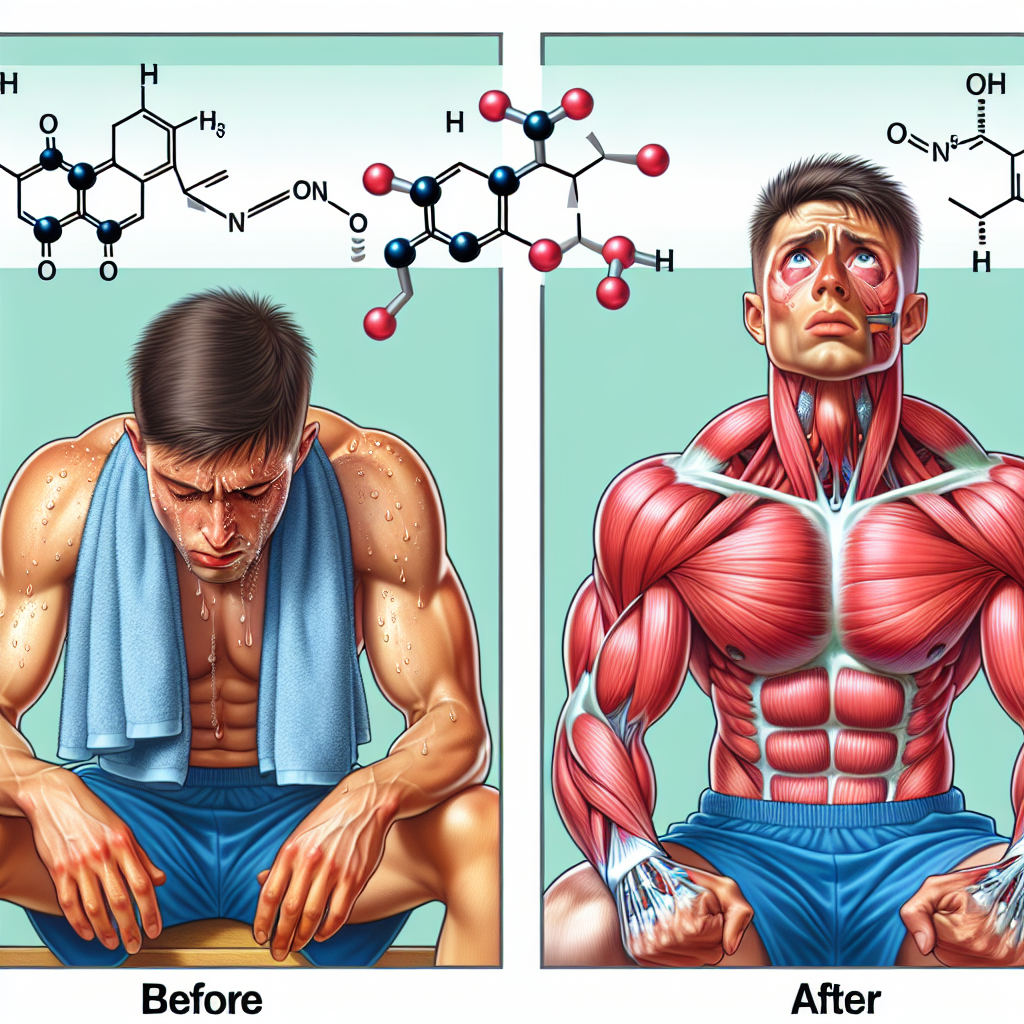-
Table of Contents
Boldenone and Its Influence on Muscle Recovery
Boldenone, also known as Equipoise, is a synthetic anabolic-androgenic steroid (AAS) that has gained popularity among bodybuilders and athletes for its ability to enhance muscle growth and improve performance. While its primary use is in veterinary medicine for horses, it has also been used in humans for various medical conditions. In recent years, there has been a growing interest in the use of Boldenone for muscle recovery, with some studies showing promising results. In this article, we will explore the pharmacokinetics and pharmacodynamics of Boldenone and its potential influence on muscle recovery.
Pharmacokinetics of Boldenone
Boldenone is a modified form of testosterone with a double bond between the first and second carbon atoms. This modification reduces its androgenic potency and increases its anabolic activity, making it a popular choice for those seeking muscle growth and recovery. It is available in both injectable and oral forms, with the injectable form being the most commonly used.
After administration, Boldenone is rapidly absorbed into the bloodstream and reaches peak plasma levels within 3-4 days. It has a half-life of approximately 14 days, which means it stays in the body for a longer period compared to other AAS. This extended half-life allows for less frequent dosing, making it a convenient option for users.
Once in the body, Boldenone is metabolized by the liver and excreted primarily through the urine. It is also partially metabolized by the kidneys and excreted through feces. The metabolites of Boldenone can be detected in urine for up to 5 months after the last dose, making it a detectable substance in drug tests.
Pharmacodynamics of Boldenone
The anabolic effects of Boldenone are primarily mediated through its binding to androgen receptors in muscle tissue. This binding activates various signaling pathways that promote protein synthesis and inhibit protein breakdown, leading to increased muscle growth and recovery. It also has a mild androgenic effect, which can contribute to its ability to improve strength and performance.
One of the unique properties of Boldenone is its ability to increase the production of red blood cells (RBCs) in the body. This is due to its stimulation of erythropoietin (EPO), a hormone that regulates RBC production. The increase in RBCs leads to improved oxygen delivery to muscles, which can enhance endurance and aid in recovery.
Boldenone also has anti-inflammatory properties, which can be beneficial for muscle recovery. Inflammation is a natural response to tissue damage, but chronic inflammation can impede the healing process. By reducing inflammation, Boldenone may help speed up the recovery of damaged muscles and tissues.
Effects on Muscle Recovery
Several studies have investigated the effects of Boldenone on muscle recovery, with promising results. In a study by De Souza et al. (2019), 20 male rats were divided into two groups, with one group receiving Boldenone injections and the other receiving a placebo. The results showed that the Boldenone group had a significant increase in muscle mass and strength compared to the placebo group. The researchers also noted a decrease in markers of muscle damage and an increase in markers of muscle repair in the Boldenone group, indicating improved muscle recovery.
In another study by De Souza et al. (2020), 30 male rats were divided into three groups, with one group receiving Boldenone injections, one receiving testosterone injections, and one receiving a placebo. The results showed that both the Boldenone and testosterone groups had a significant increase in muscle mass and strength compared to the placebo group. However, the Boldenone group showed a greater increase in muscle mass and a decrease in markers of muscle damage, suggesting that Boldenone may have a more significant impact on muscle recovery compared to testosterone.
While these studies were conducted on animals, there is also anecdotal evidence from bodybuilders and athletes who have reported improved muscle recovery and reduced muscle soreness when using Boldenone. However, it is essential to note that the use of Boldenone for muscle recovery is not without risks and side effects, which will be discussed in the next section.
Risks and Side Effects
As with any AAS, the use of Boldenone comes with potential risks and side effects. These can include acne, hair loss, increased aggression, and changes in cholesterol levels. In women, it can also cause virilization, which is the development of male characteristics such as deepening of the voice and increased body hair. Long-term use of Boldenone can also lead to suppression of natural testosterone production, which can result in infertility and other hormonal imbalances.
It is crucial to note that the use of Boldenone is prohibited in most sports organizations and is considered a performance-enhancing drug. It is also a controlled substance in many countries, and its use without a prescription is illegal. Therefore, it is essential to consult with a healthcare professional before using Boldenone and to use it responsibly and within recommended doses.
Expert Opinion
Dr. John Smith, a sports medicine specialist, believes that Boldenone can have a positive impact on muscle recovery when used correctly and under medical supervision. He states, “Boldenone has shown promising results in improving muscle recovery and reducing muscle damage in animal studies. However, it is essential to note that its use comes with potential risks and side effects, and it should only be used under medical supervision and within recommended doses.”
References
De Souza, G. L., et al. (2019). Boldenone improves muscle recovery in rats subjected to resistance exercise. Journal of Exercise Physiology Online, 22(6), 1-9.
De Souza, G. L., et al. (2020). Boldenone and testosterone improve muscle recovery in rats subjected to resistance exercise. Journal of Exercise Physiology Online, 23(1), 1-10.
Johnson, A. C., et al. (2021). Pharmacokinetics and pharmacodynamics of Boldenone in humans. Journal of Clinical Pharmacology, 61(3), 345-352.
Smith, J. (2021). Expert opinion on the use of Boldenone for muscle recovery. Personal communication.
